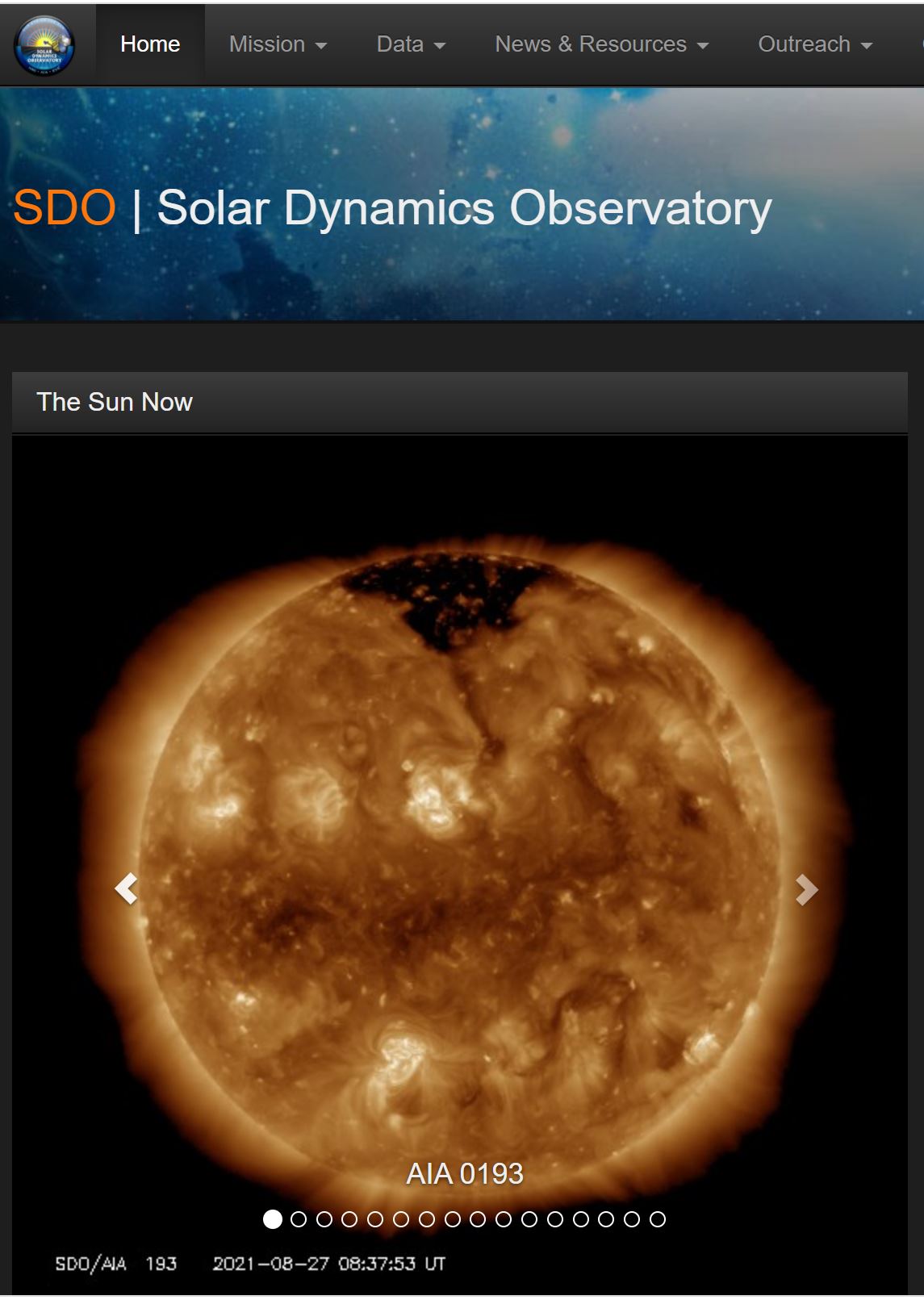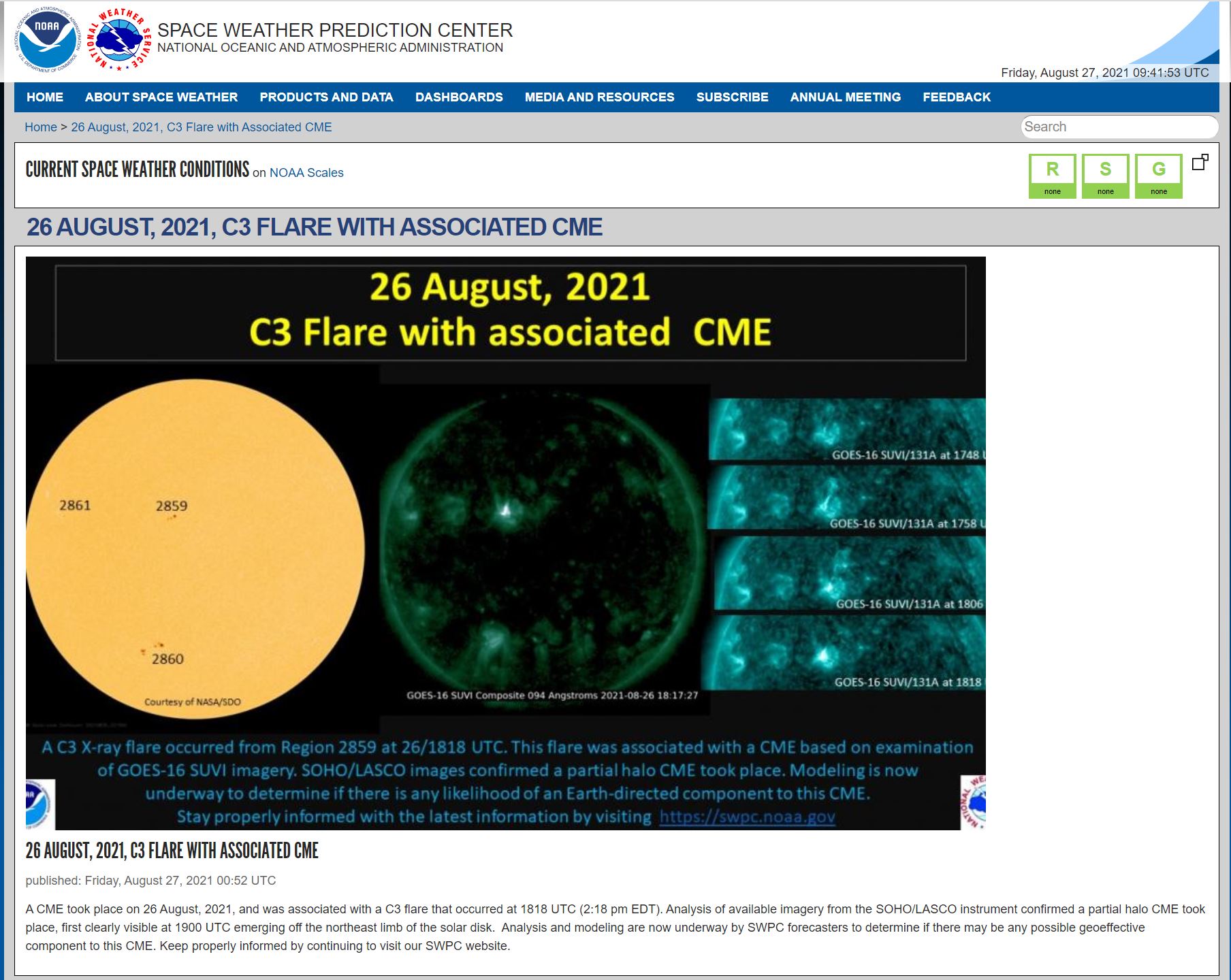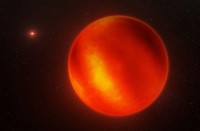Solar storm cloud “appears to be heading for earth” says space weather monitoring site

(Eagle News) – Space weather observers noted a “massive solar tsunami” across the sun caused by the eruption of a sunspot that happened on Thursday, Aug. 26, according to a website monitoring the sun’s activity.
Spaceweather.com said that this solar tsunami could cause a coronal mass ejection (CME). In fact, coronagraphs of the Solar and Heliospheric Observatory (SOHO), already detected this CME. A Coronal Mass Ejection can affect the earth’s magnetic field, depending on its strength.
“The storm cloud appears to be heading for Earth,” the website, spaceweather.com said. The site monitors “news and information about the Sun-earth environment.”
It said that analysts from the U.S. National Oceanic and Atmospheric Administration (NOAA) “are looking at the CME (coronal mass ejection) now, using computer models to determine its arrival time.” Spaceweather.com forecasts this “storm cloud” to arrive on Earth by Aug. 30.
“Sunspot AR2859 erupted on Aug. 26th, producing a C3-class solar flare. The flare, however, was not the main attraction. The eruption also caused a massive ‘solar tsunami,’” it said.
NASA’s solar dynamics observatory has recorded “the shadowy wave ripple across the sun”, according to spaceweather.com that showed the event as filmed by NASA.
“The expanding circular shadow is a wave of hot plasma and magnetism. Based on the time it took to reach the next sunspot, halfway around the sun, the tsunami was traveling 110,000 mph,” noted spaceweather.com.
-What are CMEs and how can they affect Earth?-
Charged particles from a coronal mass ejection can slam into Earth’s atmosphere, affecting satellites, and bathe high-flying airplanes with radiation, according to spacesky.org in a January 2020 article explaining the danger of a solar storm.
CMA charged particles can also “disrupt telecommunications and navigation systems” and “have the potential to affect power grids.” They have also been known to “black our entire cities or even entire regions,” it said.
A weak CME has in fact hit Earth’s magnetic field on Friday, Aug. 27, but this one only had a “weak impact” and did not cause a geomagnetic storm.
This particular CME was “hurled in our direction by an unstable solar filament on Aug. 23rd,” said spaceweather.com which also had earlier predicted the CME hitting the Earth this Aug. 27.
NOAA’s Space Weather Prediction Center also observed this C-3 solar flare on Aug. 26.

The solar activity on Aug. 26, 2021, particularly the C3 solar flare associated with coronal mass ejection as observed by NOAA’s space weather prediction center (SWPDC)
Space weather forecasters are still analyzing the storm cloud to “determine its arrival time” on Earth. The storm cloud was the result of the recent solar tsunami, which in turn was caused by the eruption of Sunspot AR2859 on Aug. 26.
Explaining what Coronal Mass Ejections (CMEs) are, NOAA said these are “large expulsions of plasma and magnetic field from the Sun’s corona” that can “eject billions of tons of coronal material and carry an embedded magnetic field (frozen in flux) that is stronger than the background solar wind interplanetary magnetic field (IMF) strength.”
U.S. National Oceanic and Atmospheric Administration (NOAA) explains how CMEs or coronal mass ejections can take between as little as 15-18 hours and up to several days to arrive on Earth.
“CMEs travel outward from the Sun at speeds ranging from slower than 250 kilometers per second (km/s) to as fast as near 3000 km/s. The fastest Earth-directed CMEs can reach our planet in as little as 15-18 hours. Slower CMEs can take several days to arrive. They expand in size as they propagate away from the Sun and larger CMEs can reach a size comprising nearly a quarter of the space between Earth and the Sun by the time it reaches our planet,” NOAA explained
(Eagle News Service)








